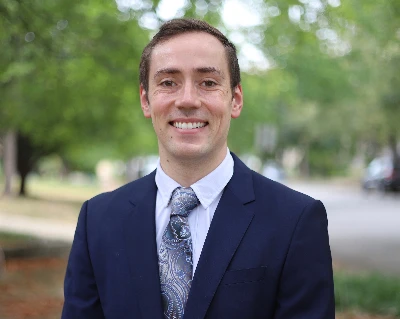1135 - Salvage Adaptive Radiation Therapy for Locoregional Recurrence of Pancreatic Adenocarcinoma
Presenter(s)

M. J. Padgett1, D. S. Lakomy2, K. H. Kang1, R. Tsai1, P. Grierson3, R. Panni4, B. Kalaghchi5, D. Sanford4, K. H. Lim5, D. Denardo5, M. R. Waters5, C. J. DeSelm5, A. Mo5, and H. Kim5; 1WashU Medicine, Saint Louis, MO, 2WashU Medicine, St. Louis, MO, 3WashU Medicine, Division of Oncology, St. Louis, MO, 4WashU Medicine, Department of Surgery, St. Louis, MO, 5WashU Medicine, Department of Radiation Oncology, St. Louis, MO
Purpose/Objective(s): Isolated locoregional recurrence of pancreatic adenocarcinoma (PDAC) occurs after surgical resection in 25-50% of cases and has limited treatment options. There is a paucity of data for using daily online adaptive radiation therapy (ART) for isolated locoregional recurrence after definitive local therapy.
Materials/Methods: We evaluated all consecutive patients at our institution who received ART for isolated locoregional recurrence of PDAC after surgical resection between 2015-2024. ART median dose of 50 Gy (range 25-50) in 5 fractions was prescribed to gross disease plus 5 mm margin. Kaplan-Meier curves with log-rank analysis and Cox regression were conducted to assess oncologic outcomes including local recurrence-free survival (LRFS), distant metastasis-free survival (DMFS), and overall survival (OS). Variables of clinical significance including biologically effective dose (BED10), planning target volume, and receipt of post-salvage radiation chemotherapy were assessed. Local failures were assessed by radiology as defined by RECIST progressive disease (20% increase in the sum of the largest diameters of the lesion) of the target lesion or new regional nodal disease that was not initially targeted.
Results: Among 51 patients treated with salvage ART, 48 and 3 patients were treated with MR and CT guided ART, respectively. Median time to local recurrence was 28 months. Eleven (22%) patients had received prior radiation to a median of 50.4 Gy, delivered in 1.8-2.2 Gy-fractions. Eighteen patients (35%) received chemotherapy prior to salvage ART and eighteen patients (35%) received post-salvage ART chemotherapy for a duration median of 3.5 and 3 months, respectively; 12% received both for a median of 3.7 months. Online adaptation was performed for 87% of delivered fractions, most commonly for exceeding small bowel (68%) and stomach (33%) constraints. With a median follow-up of 38 months from diagnosis and 8.7 months after ART, median OS was 43 and 12 months, respectively. One-year local control rate was 67%, and 1- and 2-year OS rates were 48% and 30%, respectively. Median DMFS from ART was 23 months (95%CI, 8.6-37). No tested clinical or dosimetric variables were found to be associated with OS, LRFS, or DMFS. There were no grade 3+ acute toxicities but three grade 3+ late toxicities, including one patient with a grade 5 gastrointestinal bleed of unclear origin while on anticoagulation for portal vein thrombosis.
Conclusion: ART permits high BED salvage radiation in 5 fractions and results in promising local control for isolated locoregionally recurrent PDAC after definitive local therapy, even in the setting of prior radiation. Future work may combine ART with elective nodal fields and additional chemotherapy to improve outcomes.
